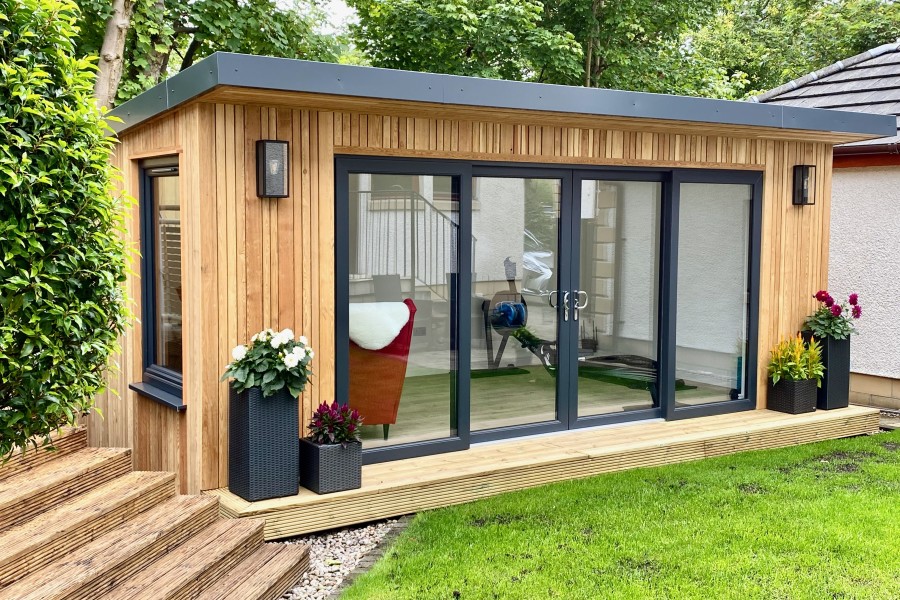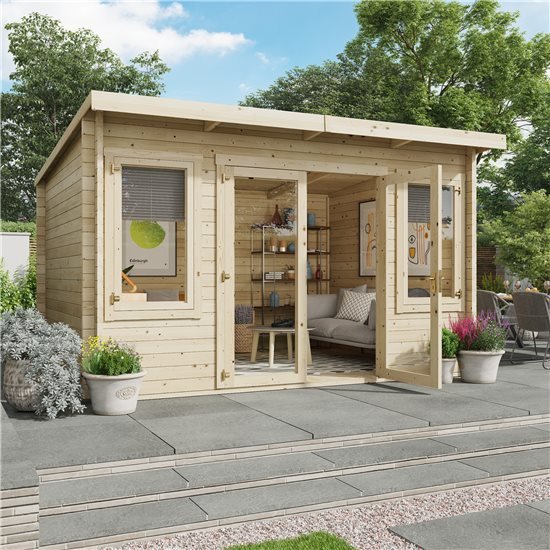Excellent Reasons On Planning Permission For Garden Conservatories
Wiki Article
What Planning Permission Do You Need For Garden Spaces, Etc. Of Change Of Use?
Planning permission may be required to construct gardens, conservatories, and outhouses. Here are the main factors to consider when applying for a permit related to the change of use changing from non-residential to residential:
If you intend to convert a non-residential structure (like a garage or an agricultural building) into a residential space or a garden office the permission to plan is normally required. This is because there will be a change in use class.
Garden Rooms as Living Space:
Use of a room in the garden as an independent living unit (e.g. guest house, rental unit) is considered to be a alteration of the use. It is required to get planning permission in order to make sure that the building meets the residential standards.
Use of Business:
Planning permission is required if the extension or garden room is used for business use. This is because of the potential impact on the neighborhood, including traffic or noise and parking.
Education or Community Use
The change of use from a garden area to an educational or community space (such as a hall for meetings or classroom) requires approval from the planning department. The local authority reviews the area's potential and impact on surrounding areas.
Impact on Local Infrastructure
Planning permission is required for any change in use that will have a major impact upon local infrastructure. Local planning authorities will be able to consider these impacts when submitting an application.
Dual Use
For properties that will have an unmixed use (such as part-residential, part-commercial), planning permission is usually required to clearly define and regulate the various uses of the property.
A Boost in Footfall
If the proposed change could result in an increase in traffic or footfall, such as converting a garden into an e-commerce space then planning permission is required to address any potential impacts to the area.
Building Regulations:
While it may not be a strictly planned issue but any change in the usage should be governed by construction codes to ensure the highest standards of safety, energy efficiency and health. This is especially relevant when the space is converted to a habitable one.
Environmental Impact:
Planning permission is needed to permit any alteration in usage that may have an impact on the environment. This includes converting farms into residential properties. Environmental assessments could be required in connection with the application.
Impact on Community and Amenities:
It is essential to think about the effect that this change has on the local amenities within the area as well as the overall appearance of the area. As an example for converting a space in the garden into a coffee shop requires planning permission. This is to ensure that it is compatible with community plans while also preserving the local amenities.
Designated Zones:
In designated areas (such as National Parks and Areas of Outstanding Natural Beauty), there are stricter regulations in place to ensure that the unique character of the place is protected. Planning permission is crucial in these instances.
Local Planning Policies
Local planning authorities have specific policies on changes to usage, and they can differ greatly. It is important to read these policies to understand the requirements for changes and what criteria need to be met.
For a brief overview, planning approval is generally needed for any significant change in the usage of the garden room conservatory outhouses, garden offices or extension. This ensures that the new use is appropriate for the location, complies with national and local policies on planning, and also addresses any potential negative impacts to the surrounding environment and the community. Check with your local planning agency as early as you can during the planning stage to identify the requirements and to obtain the necessary approvals. Follow the best modern garden office for site advice including garden room planning permission, composite garden office, luxury outhouse, small garden office, how to lay decking on soil, outhouse buildings, outhouse garden, what size garden room without planning permission uk, garden rooms near me, garden rooms in St Albans and more.

What Is The Planning Permission Required For Gardens, Etc.?
If you're planning to build conservatories or garden rooms, outhouses or gardens offices on the grounds of a listed property There are particular considerations that must be taken into consideration. The following are key considerations when preparing such projects.
In addition to the need for the planning approval, any alteration or expansion within the limits of a historic building will require listed-building consent. It is important to note that modifications could affect the character of a listed property.
Influence on Historical Character:
A planning application is required for any structure or extension which could alter the historic nature of the listed property or its location. This applies to outbuildings and garden rooms.
Design and Materials
The design and materials of the new structure should be in keeping with the architectural and historical significance of the building that is listed. It could necessitate the use and design of materials from the past. It will also require planning permission.
Nearness to the listed building:
The effect of new construction close to a heritage building are examined to determine if they detract from its character. If they don't affect the building’s character Planning permission is required to be sought.
Size and Scale
The dimensions and size must be in proportion to and compatible with the structures listed. More expansive structures tend to require detailed analysis and planning approval.
The Property Location:
The location of new structures (whether they are placed in front, on the rear or on the side of an existing structure) may affect the requirement for planning approval. Visible locations or those impacting important views of the building typically need a more thorough review.
Changes within the company:
Even if it is an independent structure, any changes to the interior to a listed building (such a creating entry points) require planning permission and listed-building approval.
Conservation Area Overlap
There are additional restrictions if the building is both listed and located in a conservation area. Planning approval is required in order to make sure that the building is compliant with listed building and conservation area regulations.
Use of Building:
Planning permission could be required depending on what the garden space or outbuilding is going to be used. The planning permission is needed for activities that require a major alteration, such as residential accommodation or a commercial use.
Structural Effect
If a building could affect the structural integrity of the structure, it will require planning permission.
Local Authority Guidelines
Local authorities will often provide specific guidelines for listed buildings, which define the kinds of construction and modifications that are permitted. These guidelines will be followed when you are granted planning permission.
Professional Assessments
Conservation experts often conduct detailed assessments on proposals for works to be completed on listed building. These assessments are used to determine if the proposed changes are appropriate and also to justify the application for planning approval.
It is important to note that planning permission or listed building consent will nearly always be required for construction of garden rooms, conservatories and outhouses as well extension or garden offices as well as gardens offices that are associated with listed buildings. Contact your local planning authority and heritage experts at the beginning of the planning process to ensure compliance with the relevant rules. This can also protect the architectural and historical integrity of the structure. View the most popular maximum size of garden room without planning permission for blog tips including conservatories and garden rooms, outhouse for garden, garden room planning permission, garden room heater, copyright garden office, garden rooms in St Albans, do i need planning permission for a garden room with toilet, outhouse garden rooms, outhouses, best heater for log cabin and more.

Limitations On Location: What Authorizations Are You Required To Obtain For Garden Rooms As Well As Other Structures?
The location restrictions are essential when planning to construct garden offices, conservatories or outhouses. Here are key location criteria to consider.
Within two meters of your property's border, any structure should not exceed 2.5 meters. If the height of the building exceeds this amount, then a planning permit is required.
Front of the property
The construction of structures on the main elevation of the house (the front side) generally require planning permission as permitted development rights do not typically allow for forward extensions or buildings.
Aspect of the Property
Side extensions have to adhere to a set of height and size limits. They often require approval from the planning department if they go over the wall on the side of the house.
Rear of the Property:
Extensions to the rear and garden rooms located at the back of the property are subject to size and height restrictions. Planning permission could be required if the extensions or garden rooms are over the permitted growth limit.
Designated Zones
Stricter controls apply in conservation zones, Areas of Outstanding Natural Beauty, National Parks and World Heritage Sites. Planning permission is required for any new structure in any size.
List Buildings
List building properties are subject to stricter regulations. Planning permission and listed-building consent are usually required to build a new structure or modify an existing one, regardless of where it is situated within the property.
Green Belt Land:
The green belt is protected through strict regulations on building to maintain open space. In most cases, permits are required for construction or major modifications.
Zones that are prone to flooding
In the event that the property is located in an area that is at risk of flooding, there are additional regulations to make sure the new construction does not increase the risk. It could be necessary to get planning permission or a flood assessment.
Urban vs. rural settings:
Urban areas typically have different regulations compared to rural ones. Rural properties can enjoy a more relaxed approach to restrictions, such as the size and location of outbuildings.
Highways and Public Rights of Way
The structure might require planning permission to ensure that it doesn't block views, access or safety in the event that it is near roads, highways or other public rights-of way.
Shared Ownership or Leasehold
If you own a property that are leasehold or part-time or share ownership schemes You may have to obtain additional permissions, or from the entity managing or freeholder, or planning permission, in accordance with the local rules.
Adjacent to other structures:
The planning permission must be obtained if the proposed structure is built next to an existing structure or structure, in particular those that are within the same property. This is to ensure that there are no adverse effects on nearby buildings or land.
Check with your local planning agency to get advice tailored to the specific location and conditions of your property. Local policies can affect laws, which is why it's essential to ensure the compliance of all restrictions. Check out the most popular composite clad garden room for website examples including garden room conservatory, best heater for log cabin, do i need planning permission for a garden room with toilet, luxury outhouse, copyright garden rooms, garden room planning permission, garden room or extension, copyright garden rooms, outhouse, garden outhouse and more.
